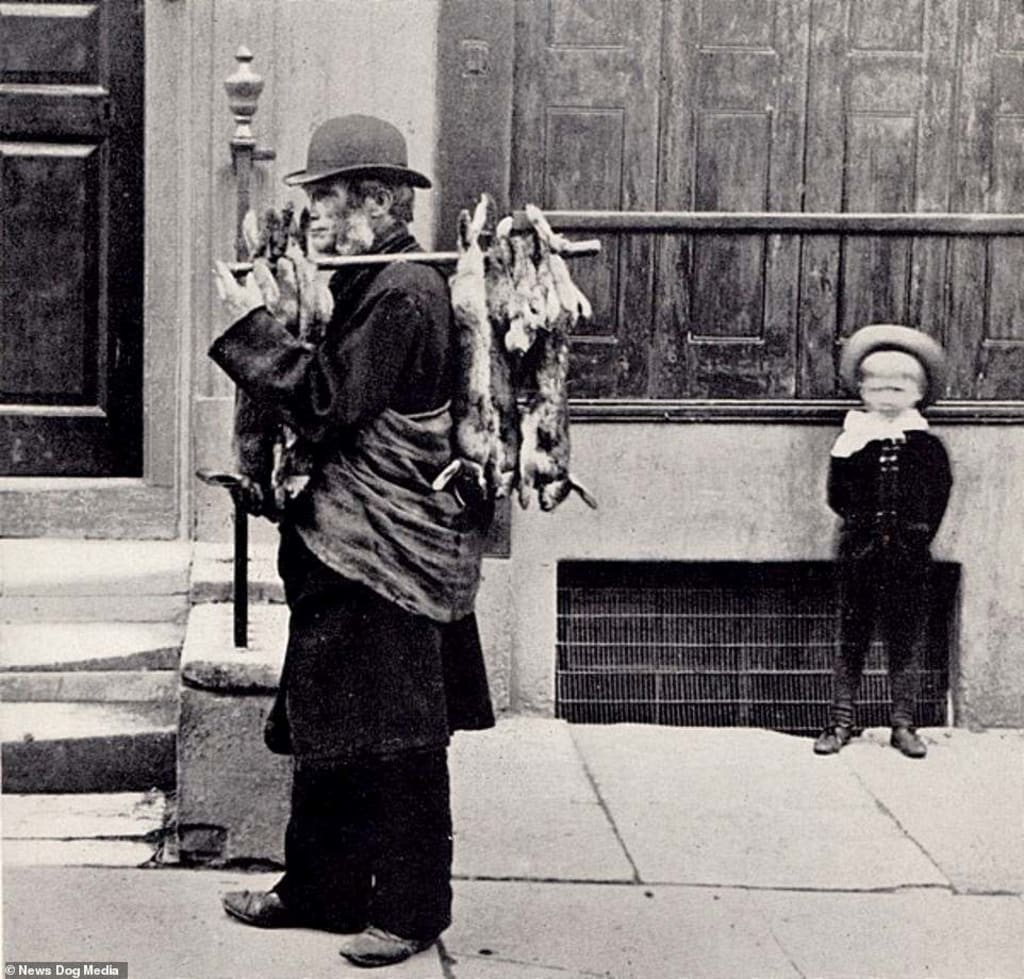STREET FOOD IN VICTORIAN LONDON
Chewy and a bony, the customers would suck the meat and fat off the bones

Chewy and a bony, the customers would suck the meat and fat off the bones!
When Queen Victoria took the throne in 1837, family life in England was transformed through her 63-year reign, and so did the food. Victorian food was sometimes bizarre, depending on a person’s status and income. During Victorian times, London’s population boomed at an unprecedented rate. In 1801, the population was around 860,000 people. By 1871, it was over three million. The new Londoners were mainly industrial workers, and they needed to be fed.
The Victorians took street food to a new level with over 6,000 street vendors selling odd and wonderful foods. They also sold some unusual foods. You needed to be careful though, some rogue traders would sell rotten meat dressed up with the fat of fresh meat; some bakers would add alum and chalk to make the bread look whiter. They would also add arsenic to preserved foods to cause an increase in tanginess. And, presumably, certain death.
The Victorians liked to boil pigs’ trotters at home when they couldn’t afford other meat. But if you were out and about, trotters would be served by pretty much every food vendor out there on the streets, right alongside a ham sandwich. Chewy and a bony, the customers would suck the meat and fat off the bones, and the Victorians loved them.
Times were tough for the poor in the Victorian era, and many would take anything they could get, like broxy. Broxy was a term for any meat the butcher had for sale that had dropped dead from disease. Sheep, which were incredibly susceptible to infectious diseases like tetanus, salmonella, and ringworm, were most often sold as broxy meats.
According to a 19th-century recipe, this was how you cooked Calf’s Head: ‘Take a calf’s head, cleave it and take out the brains, skins, and blood about it, then soak them and the head in warm water for the space of four or five hours, move them three or four times and clean the head; then boil the brains, and make a stodgy pudding with some shredded bread, brains, some beef-suet minced small, with some minced sage. Then stuff the head with this pudding, and close it up, tying it fast and tight with some packthread, spit it, and bind on the caul around the head with some pudding round about it and roast it. Keep the gravy, blow off the fat, and put to the gravy; for the sauce a small amount of white wine, a crushed nutmeg and some sweet butter, the juice of an orange, sugar and a good portion of salt. Then cover the head with some shredded bread, cinnamon, lemon peel, and salt.’
Saloop had been a popular drink since the 1600s, was a hot and nutritious, sweetened drink made from mushed orchid roots. Towards the second half of the nineteenth century, the basis of the drink changed to sassafras bark, flavoured with sugar and milk. Saloop was looked upon as a tasty and starchy way to start or end the day. If you were lucky, the Saloop was made with the correct roots, and not tea leaves picked from the rubbish heap. Saloop fell from favour after a reduction in tax made tea affordable.
Though technically not street food, it was said the hot blood of a slaughtered animal would build up a sick person’s constitution, taking away disease. People would queue up at the slaughterhouse with mugs ready to catch the blood, which was drunk straight away. On a good day, the animal was dead when the collecting began!
About the Creator
Paul Asling
I share a special love for London, both new and old. I began writing fiction at 40, with most of my books and stories set in London.
MY WRITING WILL MAKE YOU LAUGH, CRY, AND HAVE YOU GRIPPED THROUGHOUT.
paulaslingauthor.com






Comments
There are no comments for this story
Be the first to respond and start the conversation.